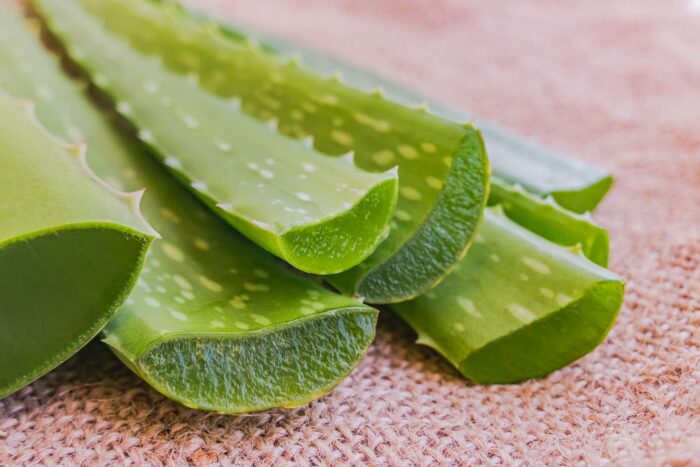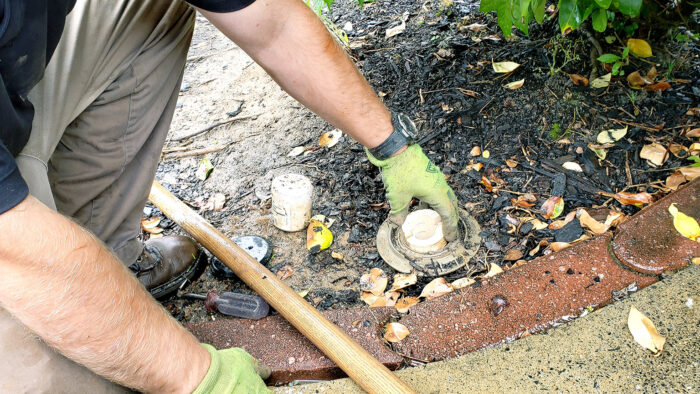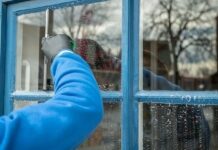
Termite infestations pose a significant threat to the structural integrity of homes. Addressing these infestations promptly is crucial to prevent extensive damage.
While professional termite treatments, such as termite tenting, are highly effective, they can be costly.
Fortunately, several DIY solutions can help manage termite problems without breaking the bank.
Top DIY Termite Treatments
Finding an effective DIY treatment can provide you with a plethora of benefits.
1. Aloe Vera Gel

How it works ─ Aloe vera gel creates a protective barrier on wooden surfaces that deters termites from infesting the wood.
Application process ─ Extract gel from aloe vera leaves and apply a generous amount to wooden furniture or structures. Reapply periodically to maintain effectiveness.
Pros:
- Natural and non-toxic
- Easy to apply
Cons:
- Requires frequent reapplication
- May not be effective for severe infestations
2. Bait Systems
Bait systems are a strategic and effective method for combating termite infestations. These systems work by attracting termites to a bait station, where they consume a specially formulated bait that is toxic to them but slow-acting.
Steps for Setting Up a Bait System

1. Using Wet Cardboard
Wet cardboard acts as a simple yet effective bait for termites due to its high cellulose content, which termites find irresistible.
If termites are found on the cardboard, replace it with fresh, wet cardboard regularly to ensure a continuous supply of bait.
2. Commercial Bait Stations
Commercial bait stations are pre-packaged units that contain cellulose-based bait laced with a slow-acting insecticide. To install these, follow the manufacturer’s instructions carefully. Typically, bait stations are placed around the perimeter of your home, about 10 to 15 feet apart.
3. Safe Disposal of Infested Bait
When termites infest the bait, it’s crucial to handle it safely to avoid spreading termites to other areas.
Wear gloves and place the infested bait into a sealed plastic bag before disposing of it in the trash.
Check the bait stations at least monthly and replace any bait that has been consumed or infested. This helps maintain the effectiveness of the system over time.
Pros:
- Targets the entire colony
- Less invasive than other treatments
Cons
- Requires regular monitoring
- May take time to see results
3. Orange Oil

How it works ─ Orange oil contains d-limonene, a compound toxic to termites that destroys their exoskeletons and disrupts their respiratory systems.
Application process:
- Spot treatment:
- Apply orange oil directly to infested wood using a spray bottle.
- Injecting into termite galleries:
- Drill small holes into infested wood and inject orange oil into the galleries where termites are active.
- Safety precautions:
- Wear gloves and safety goggles when handling orange oil, and ensure adequate ventilation during application.
Pros:
- Effective spot treatment
- Natural and non-toxic
Cons:
- Limited to spot treatments
- May not reach deep infestations
4. Boric Acid

How it works ─ Boric acid disrupts termites’ digestive systems, leading to starvation and death.
Application process:
- Applying powder:
- Spread boric acid powder around entry points and potential hiding spots for termites.
- Safety precautions:
- Use gloves and a mask to avoid inhaling the powder, and keep it away from pets and children.
Pros:
- Inexpensive
- Effective for both prevention and treatment
Cons:
- Requires careful handling
- May need repeated applications
Summary
While professional treatments like termite tenting are highly effective, these DIY solutions provide cost-effective alternatives for managing termite infestations.
By understanding the types of termites and the signs of their presence, homeowners can apply these treatments to protect their homes from termite damage.














